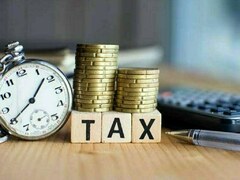The Finance ministry has released its Monthly Economic Update, which gives a snapshot of the performance of the caretakers. Per the report, economic indicators have improved under the caretakers while the macro health is stabilizing. However, nothing will be achieved without inflicting further economic pain on the population.
The fiscal consolidation is happening which is evident from higher primary surplus, and lower net domestic borrowing. The economic activities are modestly bouncing after a year of negative GDP growth. The best-performing sector is agriculture where last year was adversely affected by the floods and growth is emanating from a low base, while another advantage is the better soil condition after the floods.
The fear of the economic default has been arrested, as the caretaker government did not shy away from passing on the inefficiencies of public sector entities in the energy value chain to the consumers. This cold-blooded style of management yielded results in terms of taming the quasi-fiscal debt. Nonetheless, due to successive revision in electricity and gas tariffs, inflation could not be tamed.
The quarterly GDP growth was in green (at 2.1 percent) in 1QFY24 after two successive quarters of negative growth. As mentioned above, agriculture is the driver which has posted 5 percent growth. The ministry claims that the data from the second quarter is also showing stronger performance in manufacturing sector, as it shows 8.4 percent growth in the 2Q as compared to the 1Q. Although the numbers are better, the dip was also very deep last year. The high-frequency data depicts that many sectors are still shy from peak levels in FY22 – especially, the automobile and engineering sectors are in shambles.
The fiscal revenue growth was the hallmark, as high inflation, and imposition of taxes are yielding results. FBR tax collection grew by 30 percent to Rs5.15 trillion in 7MFY24 – the collection is skewed towards domestic taxes which are up by 40 percent. The ministry says that better valuation in imports and anti-smuggling drive helped in achieving 16 percent growth in imports taxes whereas imports are down by 11 percent in the same period.
The revenue growth was not enough to beat the expenditure pace, as the overall fiscal deficit reached 2.3 percent of GDP in 1HFY24 (2 percent in 1HFY23). The main reason is higher interest cost as the policy rate was at peak 22 percent in the period, and debt accumulation did not stop. And one of the reasons for higher domestic revenues was growth in taxes on interest income. And amid managing debt servicing, there is not much left for any discretionary funding.
The comforting and stabilizing story is in the external sector where the current account deficit is reduced to $1.1 billion in 7MFY24- down from $3.8 billion in the same period last year. The near zero current account deficit story continues, as the country does not have any surplus capital and financial account inflows to finance current account deficit (of 2-3 percent of GDP), and in the process economic growth is a casualty.
One area where caretakers could not perform well is inflation (although controlling it is the domain of SBP). The headline inflation was recorded at 28.3 percent in 7MFY24 as compared to 25.4 percent in the corresponding period last year. Last month inflation was at 28.3 percent.
The two challenges for the upcoming government are controlling inflation and spurring economic growth without creating another balance of payment-crisis. The outlook is not bad, as the worst part is over, and the currency may remain relatively stable, and inflation shall slowly taper off. The new government must make some blunders to not achieve it. The key challenge would be to create jobs and spur economic growth.
























Comments